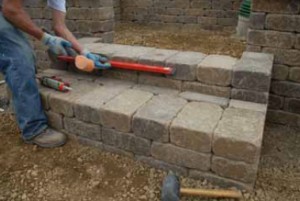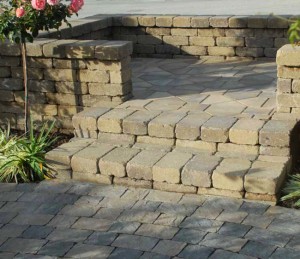Steps & Stairs


Steps & Stairs
Precise planning is critical in achieving the best results. Starting and ending points, rise heights, run lengths, curved stairs, straight stairs and landing sizes all need to be determined prior to layout and construction. Form the steps by digging out the earth and then place base rock to form the rough layout of the steps. Install the Roman Stone units to box in the step then put more base rock in to level. Then do the same for each step. If this is your first time designing and constructing stairs it is recommended that you visit the web for more detailed information or ask the advice of an experienced step builder.
